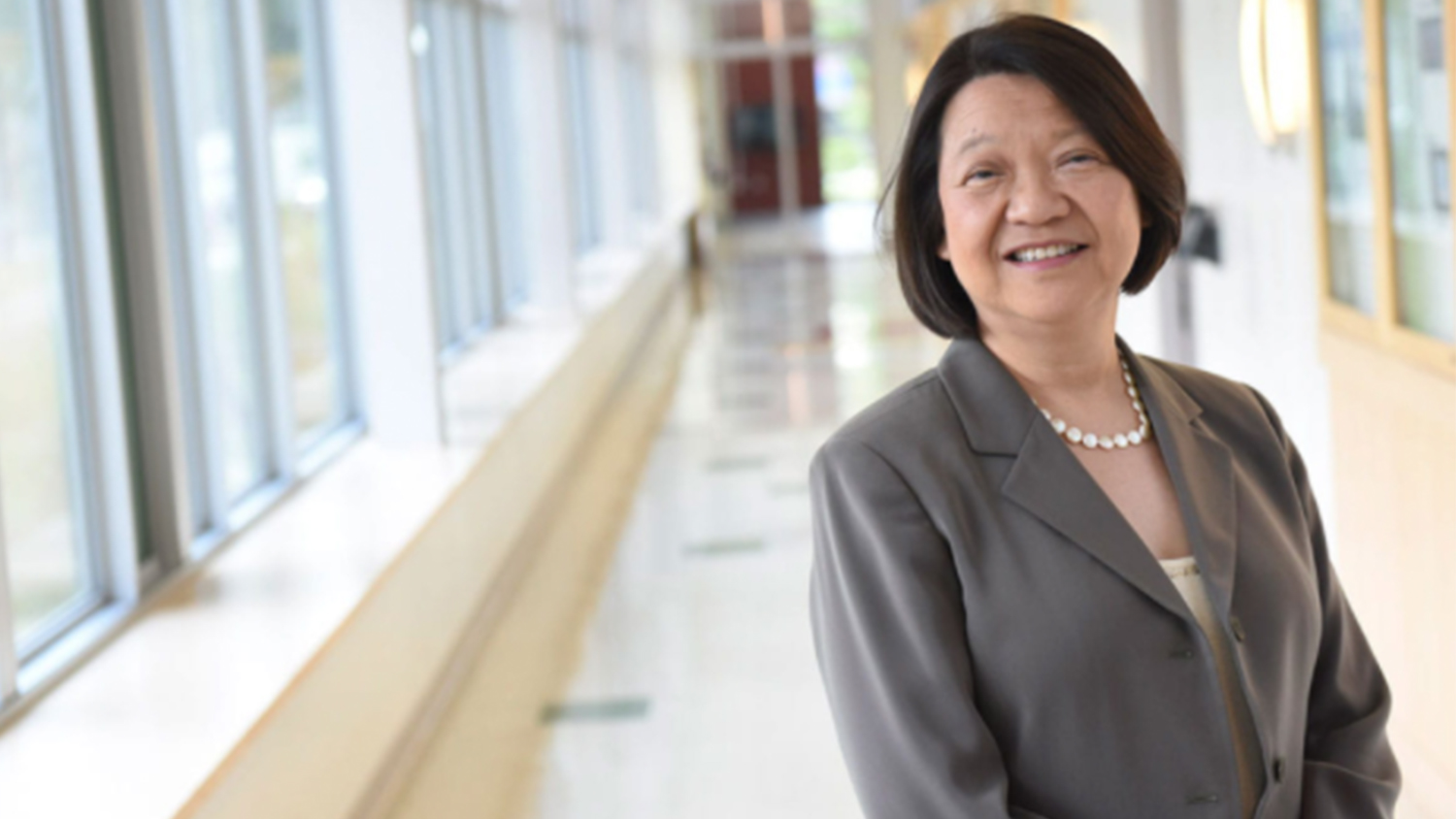‘Like a Flash of Lightning in the Night, the Pandemic Revealed all the Cracks and Fissures’: 2020 Dallas Herring Lecture Explores the Insights Learned from COVID-19 Impact at Community Colleges

In communities of color and communities struggling with poverty nationwide, community colleges are often a student’s best hope for success. However, the onset of the COVID-19 pandemic in March has highlighted the failure of social and economic systems in these marginalized communities, according to Pam Eddinger, Ph.D., president of Bunker Hill Community College in Massachusetts.
In delivering the 2020 Dallas Herring Lecture, held virtually on Nov. 10, 2020 and hosted by the NC State College of Education’s Belk Center for Community College Leadership and Research, Eddinger attested that the pandemic underscored the ways in which the community college system is deeply entangled and interdependent with social, racial and economic forces.
“Like a flash of lightning in the night, the pandemic revealed all the cracks and fissures hidden in the landscape and gave us a stark and unsparing look at the cavernous wealth and attainment gap before us in our Black and Brown urban communities, in the immigrant communities of our gateway cities and in our poor, white communities in the rural regions,” she said in the lecture, entitled Insights from the Pandemic: The Reckoning and the Hope at Our Nation’s Community Colleges.
Using data from Bunker Hill’s home state of Massachusetts to highlight common community college demographics, Eddinger said that three-quarters of community college students are from the lowest two quintiles of income. Many of these community college students, both in Massachusetts and across the country, balance their education alongside full-time jobs, parental responsibilities and struggles with food insecurity.
When they face obstacles, their education is often forced to take a back seat to immediate family and financial obligations. This effect was amplified when community college students — many of whom had to help children with remote learning or had jobs as “essential workers,” which left them more susceptible to contracting COVID-19 — now had to grapple with struggles brought on by the pandemic.
While the pandemic underscored the harsh realities that community college students face, Eddinger said that it also demonstrated the radical transformation of community colleges over the past couple of decades to become more than just a place for learning.
“In its deep concern with poverty and its inequitable effects on students, community colleges have built infrastructure on their campuses over time to compensate for the lack of support and resources in individual families and in the community,” she said. “We built libraries and study commons, computer labs with wifi, dining commons, clinics, food pantries, community gathering spaces, offices of emergency services, emergency housing, mental health counseling and many other social services that kept our students connected.”
When community colleges were forced to close their physical campuses to stop the spread of the coronavirus, they needed to come up with continued ways to support these students on their educational journey.
In addition to offering pass/fail options for classes so a student’s GPA would not be negatively impacted during the pandemic, Bunker Hill sent out 700 pieces of computer equipment, partnered with a nonprofit organization to deliver meals and grocery store gift cards while their food pantry was closed and has explored expanding wifi access on outdoor parts of the campus for students to use.
Measures like this at community colleges across the country, Eddinger said, are crucial to helping community college students feel a sense of belonging and helping them succeed academically.
“A student’s ability to persist and succeed at community college is tied to their perception of belonging. Without it, learners are cast in limbo, in exile, as we saw when we closed the physical campus in March,” she said. “Fostering that sense of belonging requires us to build a complex web of assurance: of physical safety, of financial survival, of basic needs, of social connections, of cultural respect and of intellectual curiosity.”
The pandemic has forced community colleges to shift their focus to better understand how the institutions can provide support for students to be successful. Instead of asking how they can close the achievement gap, they are questioning how they have been complicit in perpetuating inequities and how they can better ready themselves to support students in ways that promote success.
As community colleges move beyond academic solutions to fostering student success, Eddinger offered the following six strategies to create a sense of belonging:
- Know Your Students: “Achieving The Dream’s institutional change work on Holistic Student Support begins with this deceptively simple request. We must know our students in the context of their lived experiences as well as their data file. Know their community and their histories, and acknowledge their complexity.”
- Dismantle Negative Narratives: “We reframe the negative, stereotypical narratives of our students, whether it is based on race, ethnicity, economic and social status, or gender. Only then can we affirm their place and worth in the academic space.”
- Identify Cultural Wealth: “Our solution to student success cannot lie in academic and curricular intervention alone. If so, we would have solved the issue a decade ago. Knowing our students requires that we honor the heritages and the cultural capital they bring with them, and help them apply these strengths in service to their learning.”
- Recognize #RealCollege as Contemporary Higher Education: “We acknowledge the real risks experienced by undergraduates in physical, emotional and financial terms as higher education becomes increasingly out of reach. Reassess traditional assumptions about college as a rite of passage for young men and women, and recognize the impact of outdated policies and practices on today’s undergraduates, the majority of whom are post-traditional working adults and student parents.”
- Know Who You are in Your Guidance: “As practitioners, we strive for a dual awareness of the experiences that shaped us as educators, and the impact of that upon our students, who carry with them their own unique backgrounds and cultures. We check our own assumptions about our students, their origins, and their experiences, and ensure that we have not inadvertently built biases into our human and electronic interactions.
- Categories:


